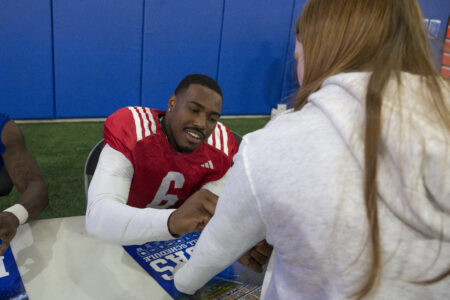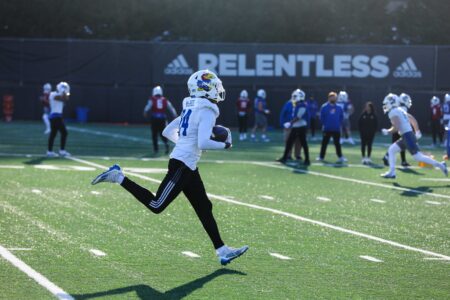Sayers coulda for K.C.
In an indirect way, two former Kansas University football stars factored in the outcome of Super Bowl I: Curtis McClinton because he played, and Gale Sayers because he didn’t – though Gale predicted the result.
Green Bay’s 35-10 victory over Kansas City in Los Angeles wasn’t yet formally labeled a “Super Bowl.” It was a groundbreaking NFL-AFL showdown as the newer league, spawned by Lamar Hunt, struggled for visibility and demanded recognition.
Sayers began his Hall-of-Fame career with the Chicago Bears in 1965 and 1966 and was back in Lawrence for a visit prior to the Jan. 15, 1967, Packer-Chief game. Asked who’d win, Gale hesitated not a second.
“The Chiefs have as many offensive weapons as the Packers, but they haven’t seen the caliber of defense Green Bay will throw at them,” he said. “The AFL is coming, but it’s a year or two away from the defenses of NFL coaches like Vince Lombardi, George Halas and Tom Landry.”
Green Bay led only 14-10 at the half, then all-pro safety Willie Wood set up a key touchdown with a 50-yard interception return. Bart Starr, Max McGee and Elijah Pitts sparkled in the 35-10 win. K.C.’s only touchdown came on a seven-yard Len Dawson pass to ex-Jayhawk McClinton.
In ’68, Green Bay repeated and beat Oakland, 33-14. New York’s Jets stunned Baltimore in ’69; in the ’70 game, Kansas City’s defense triggered a 23-7 rip of Minnesota.
But a previous McClinton-Sayers conversation probably denied the Chiefs the services of Sayers.
McClinton joined the AFL Dallas Texans, later Chiefs, in 1962 as a prime draft choice. Came the ’65 draft, and both K.C. of the AFL and Chicago of the NFL got rights to Sayers. Chicago coach-owner Halas was obscenely snug with a buck, but he opened the cash register for Sayers. When the bidding ended, it was even-steven. The housing situation settled it.
Curtis and Gale were, and remain, good friends. Gale asked for advice. Curtis told him that if he picked K.C., regardless of his resources, he could get a good house in a poor neighborhood or a poor house in a good neighborhood. At the time, Curtis says, 27th Street was pretty much the black-white dividing line in KC Moe. Chicago seemed more receptive to minorities; the living conditions Gale and then-wife Linda could get there topped what they saw in Kansas City.
Sayers chose the Bears. In only 65 pro games (knee tragedies), he was named with Cleveland’s Jim Brown as a first-team running back with the all-time, all-pro offensive unit. Except for the housing situation, Gale could have been performing with McClinton, Len Dawson and Co. in that AFL-NFL zone-breaker.
That unofficial Super Bowl I game was played before 61,946 in the Los Angeles Coliseum, about 30,000 short of capacity. Tickets that day could be had for $10 at the gate, quite a contrast to the thousands that some shell out these days when they can see things like Janet Jackson’s wardrobe malfunction much better on television.
Green Bay players in ’67 took home $15,000 each; the Chiefs got $7,500 apiece. At the time, those were the largest single-game shares in the history of sports. Now it may run as high as $70,000-$40,000, or close.
Saddest thing is that good football too often gets short-sheeted in the zeal to be cute or trendy. Mick Jagger, for cripe’s sake?







